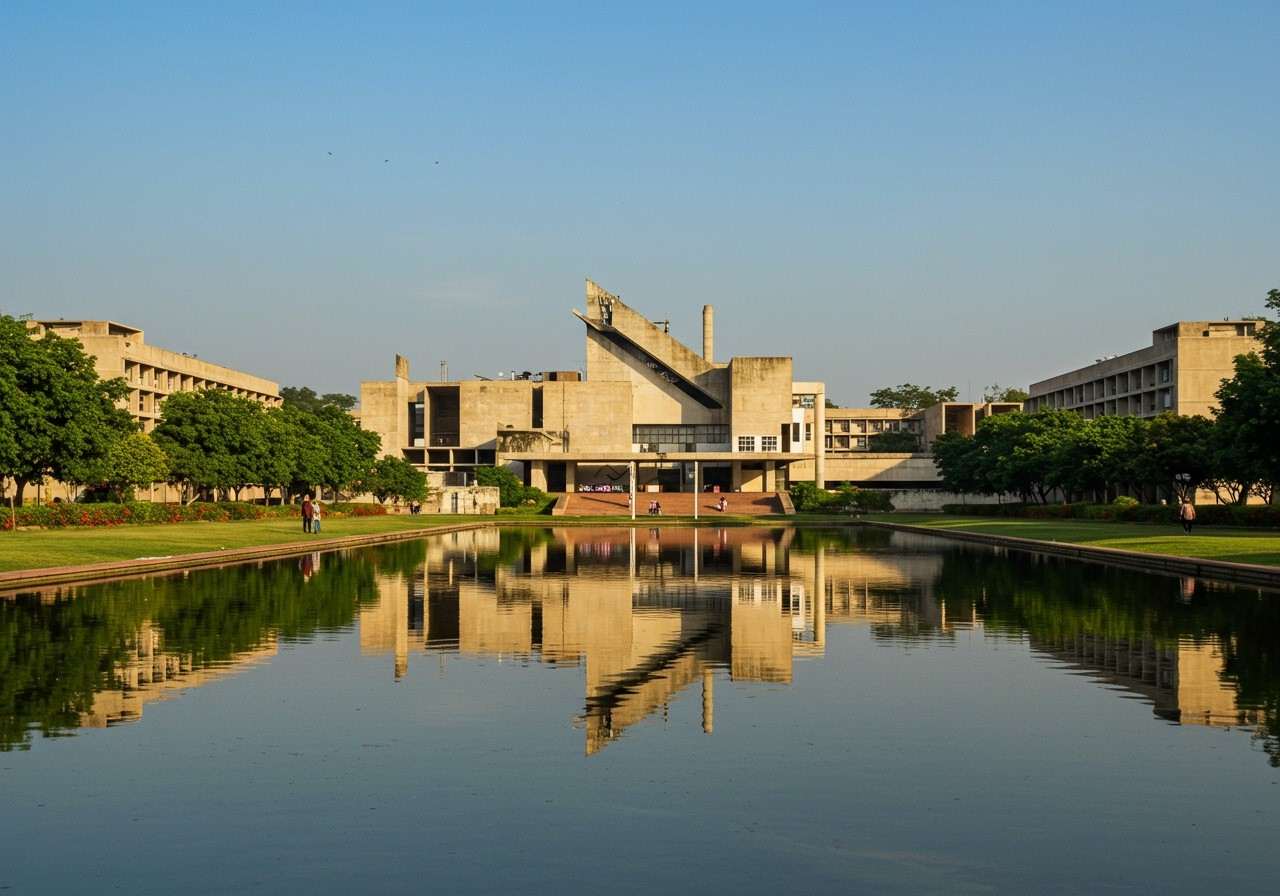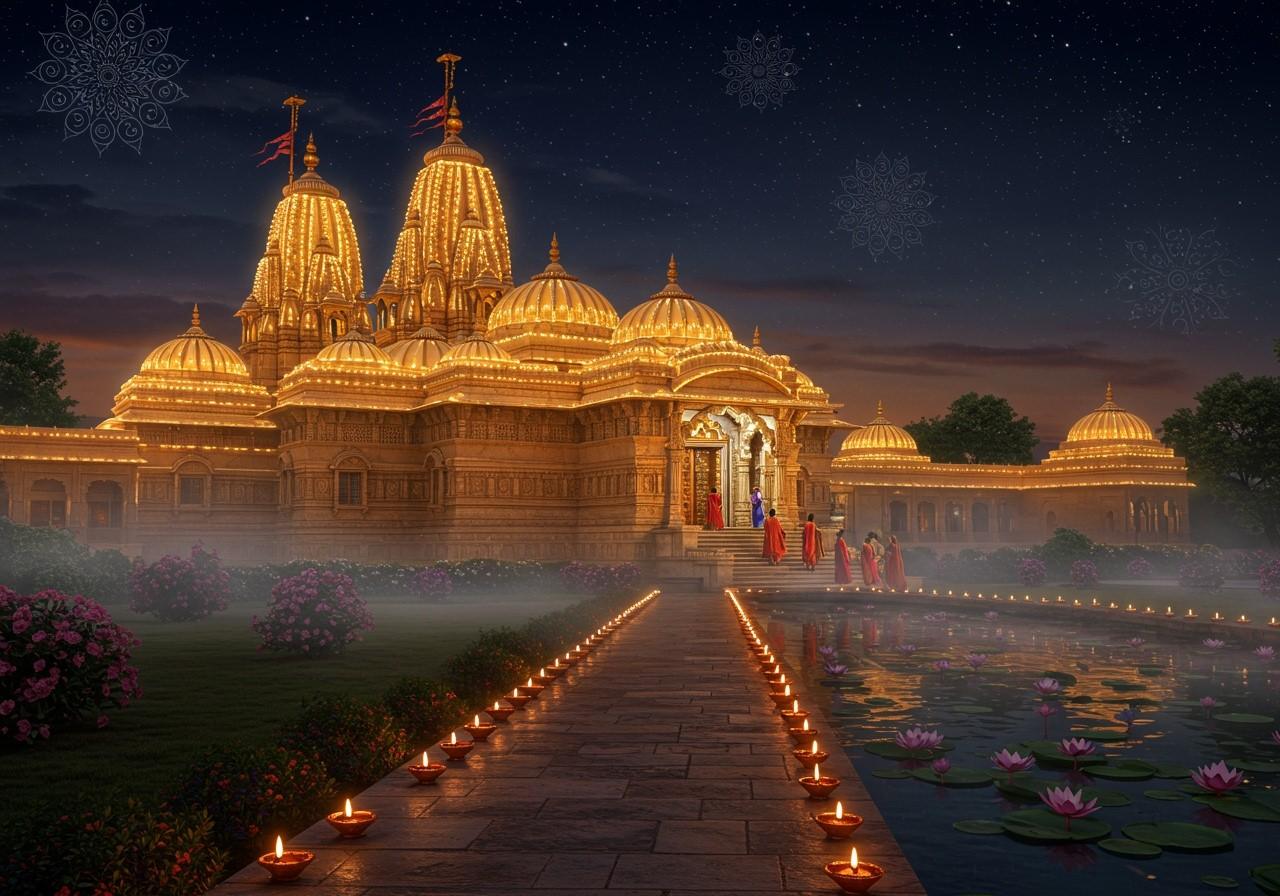
Imagine a time, right after India gained its freedom. The air was thick with hope, dreams, and a desire to build a new future. It was in this moment of profound change that Prime Minister Jawaharlal Nehru envisioned a city that would be a symbol of this new India—a city free from the weight of the past, looking boldly towards the future. This dream took the form of Chandigarh, a masterpiece of urban planning and modernist architecture, brought to life by the genius of Swiss-French architect Le Corbusier.
Come, let’s take a walk through the clean, green, and beautifully organised streets of Chandigarh and discover why it’s not just a city, but a living, breathing work of art.

The Birth of a Visionary City
In the 1950s, Le Corbusier, along with a dedicated team including Jane Drew and Pierre Jeanneret, was given a blank canvas to create a city from scratch. They didn’t just design buildings; they designed a way of life. The core idea was simple yet revolutionary: functionality, simplicity, and a deep connection with nature. The result is a city laid out on a grid, with wide roads, ample green spaces, and a sense of order that feels calming to the soul.
Architectural Jewels in Chandigarh’s Crown
The true heartbeat of Chandigarh lies in its iconic buildings, which stand as proud examples of modernist thought. They speak a language of strength, honesty, and purpose.
The Capitol Complex: A UNESCO World Heritage Gem
This is the administrative and spiritual centre of the city. The Capitol Complex, now a UNESCO World Heritage Site, houses the seats of government—the Secretariat, the High Court, and the Palace of Assembly. Made from raw concrete, these monumental structures might seem imposing at first, but they embody the strength and transparency of a new democracy. Le Corbusier wasn’t just an architect here; he was a sculptor shaping the very identity of a nation.
Symbols of Peace and Serenity
Standing tall within the Capitol Complex is the Open Hand Monument, a powerful symbol that signifies peace, unity, and the spirit of giving and receiving. A short distance away lies Sukhna Lake, a man-made marvel that has become the city’s favourite spot for evening walks, quiet reflection, and family outings. It reminds us that even in a meticulously planned city, there is always space for serenity and nature.
A City Designed for Living
What truly makes Chandigarh special is that it was designed for people. The city is divided into self-sufficient sectors, each with its own markets, schools, and green spaces. It’s like a collection of small, friendly villages living together in a big city.
The architects smartly used locally available and cost-effective materials like brick and concrete. This practicality is a hallmark of the city’s design. Running through the city like a green artery is the Leisure Valley, a long stretch of parks and gardens that act as the city’s lungs, ensuring that residents are never far from nature.
Where Modern Design Meets India’s Soul
While Chandigarh is a modernist city, it has a vibrant cultural soul. The world-famous Rock Garden, created by the visionary artist Nek Chand, is a magical kingdom built from industrial and home waste. It’s a beautiful testament to creativity and the Indian spirit of turning the ordinary into the extraordinary.
Just as Nek Chand brought art into open spaces, you can bring a touch of artistic elegance into your own home. A well-placed decorative item can transform a room, making it a space for peace and reflection. Consider adding something beautiful like this handcrafted White Lotus Tealight Holder to your living room or this serene Urli Bowl for floating flowers to your pooja space, creating an ambience that marries tradition with modern style.
Answering Your Curiosities About Chandigarh
Many often wonder what truly sets Chandigarh’s architecture apart. It’s the city’s bold and beautiful embrace of modernism, where every building and every road was designed with a clear purpose. The clean lines, open spaces, and use of raw materials like concrete give it a unique and timeless character that you won’t find anywhere else in India.
The meticulous planning is another key aspect. The city was laid out in a grid, with sectors designed to be self-sufficient neighbourhoods. This thoughtful design ensures that life is convenient and organised. But Chandigarh isn’t just about concrete and grids; it’s a cultural landmark that beautifully balances this modernity with India’s rich spirit. The integration of green belts, gardens, and cultural spaces like museums and theatres ensures a harmonious living experience.
This perfect balance is why Chandigarh is so important in the history of urban planning. It was a pioneering project for post-independence India and continues to be a global example of how a city can be both incredibly functional and aesthetically pleasing. It’s a place where nature is not an afterthought but a core part of the design, making it truly a city with a soul.


